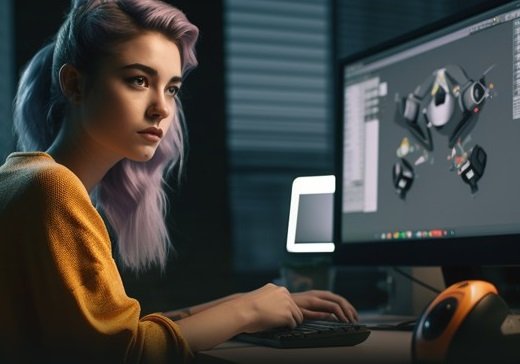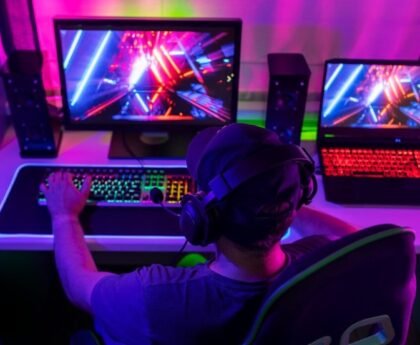Introduction
In the dynamic and visually immersive world of game development, 3D modeling serves as the backbone for bringing virtual worlds to life. The process of creating intricate 3D models for games requires a well-defined and efficient workflow. From concept to implementation, understanding and optimizing the 3D modeling workflow for game is crucial for game developers to produce visually stunning and engaging gaming experiences. In this comprehensive guide, we will delve into the intricacies of the 3D modeling workflow for games, exploring key stages, best practices, and the tools that empower developers to create lifelike characters, environments, and objects.
Stages of the 3D Modeling Workflow
- Conceptualization and Planning:
- The journey of a 3D model begins with a clear concept and vision. Game developers collaborate with concept artists and designers to create sketches, mood boards, and reference images that define the look and feel of the desired 3D model. This stage sets the foundation for the entire modeling process.
- Blocking Out:
- Once the concept is approved, the 3D modeler starts with the blocking-out phase. This involves creating a simplified version of the model to establish its basic form and proportions. Blockouts serve as a spatial guide and help in identifying potential design issues early in the process.
- High-Resolution Modeling:
- With the blockout as a reference, the modeler proceeds to create the high-resolution version of the 3D model. This stage involves adding intricate details, refining shapes, and ensuring that the model adheres to the design specifications. High-resolution modeling is crucial for capturing the nuances that contribute to realism in the final product.
- UV Mapping:
- UV mapping is the process of unwrapping the 3D model to create a 2D representation of its surface. This mapping is essential for applying textures accurately. Efficient UV mapping ensures that textures appear seamless and enhance the overall visual quality of the model.
- Texturing:
- Texturing brings the 3D model to life by applying surface details, colors, and materials. Texture artists use software like Substance Painter or Photoshop to create intricate textures that define the visual appearance of the model. The choice of textures significantly impacts the realism and aesthetics of the final product.
- Rigging:
- Rigging is the process of adding a digital skeleton (bones and joints) to the 3D model, enabling it to move and animate realistically. Rigging is crucial for characters and creatures that need to exhibit complex movements in the game. Well-executed rigging allows animators to breathe life into the model during the animation phase.
- Animation:
- Animation involves creating a sequence of movements for the 3D model, bringing it to life within the game environment. Animators use the rigged structure to define how the model moves, emotes, and interacts with its surroundings. This stage is vital for conveying the narrative and enhancing the overall gaming experience.
- Optimization:
- As games need to run smoothly on various platforms, optimizing 3D models is crucial. This involves reducing the model’s poly count, simplifying geometry, and optimizing textures to ensure optimal performance without compromising visual quality.
- Integration into Game Engine:
- The final step involves integrating the 3D model into the game engine. This process requires exporting the model in a compatible format and configuring it within the game engine environment. Ensuring proper scaling, lighting, and collision detection are critical for seamless integration.
Best Practices in 3D Modeling Workflow for Games
- Collaborative Planning:
- Effective communication between concept artists, designers, and modelers is essential during the planning stage. Collaborative planning ensures a shared vision and minimizes the risk of misunderstandings or misalignments in the later stages of development.
- Modular Design:
- Embracing a modular design approach allows modelers to create reusable components that can be assembled to construct larger environments or characters. This not only speeds up the modeling process but also facilitates changes and updates without redesigning the entire model.
- Consistent Naming Conventions:
- Establishing consistent naming conventions for files, objects, and textures is crucial for organization and collaboration. A well-organized file structure makes it easier for artists and developers to locate and work on specific components of the project.
- Version Control:
- Implementing version control systems, such as Git, is vital for tracking changes and managing collaborative efforts. This ensures that multiple team members can work on different aspects of the 3D model simultaneously without the risk of conflicting modifications.
- Progressive Detailing:
- The modeling process is most efficient when approached progressively. Starting with a rough blockout and gradually adding detail allows modelers to refine the design iteratively. This iterative approach enables quick feedback loops and adjustments as needed.
- Efficient UV Mapping:
- Investing time in creating efficient UV maps pays off during the texturing phase. Well-organized UV maps minimize distortion and seam visibility, making it easier for texture artists to create high-quality textures that seamlessly align with the 3D model.
- Test Early and Often:
- Regular testing within the game engine throughout the development process helps identify potential issues early on. This proactive approach allows for quick adjustments and ensures that the final integration into the game environment is smooth and error-free.
Tools for 3D Modeling in Games
- Autodesk Maya:
- Maya is a widely used 3D modeling and animation software that provides a comprehensive set of tools for modeling, texturing, rigging, and animation. It is a go-to choice for many game developers due to its versatility and industry-standard features.
- Blender:
- Blender is an open-source 3D modeling software that offers powerful capabilities for modeling, sculpting, texturing, rigging, and animation. Its active community and regular updates make it a popular choice for independent game developers.
- ZBrush:
- ZBrush is a digital sculpting software that excels in creating highly detailed and intricate 3D models. It is often used for character modeling and sculpting due to its advanced tools for detailing and texture painting.
- Substance Painter:
- Substance Painter is a texturing software that streamlines the process of creating realistic textures for 3D models. Its intuitive interface and real-time preview features make it a preferred choice for texture artists working on game assets.
- 3ds Max:
- 3ds Max is another Autodesk product widely used in the gaming industry. It is known for its modeling and animation capabilities and is often preferred for architectural visualization and environment design within games.
- Unity and Unreal Engine:
- Both Unity and Unreal Engine serve as powerful game engines with integrated tools for 3D modeling, animation, and real-time rendering. These engines simplify the integration of 3D models into the game environment and provide a platform for testing and refining the final product.
Conclusion
Mastering the 3D modeling workflow for games is an art that requires a blend of creativity, technical skill, and strategic planning. From the conceptualization phase to the final integration into the game engine, each stage plays a pivotal role in shaping the visual aesthetics and overall gaming experience. By embracing best practices, collaborative planning, and leveraging cutting-edge tools, game developers can navigate the complexities of 3D modeling, ensuring the creation of immersive and visually captivating virtual worlds.
As technology continues to advance, the landscape of 3D modeling in games will evolve, presenting new possibilities and challenges. Staying abreast of industry trends, adopting innovative tools, and fostering a collaborative and iterative approach will be key to pushing the boundaries of what is visually achievable in the ever-evolving realm of game development.



